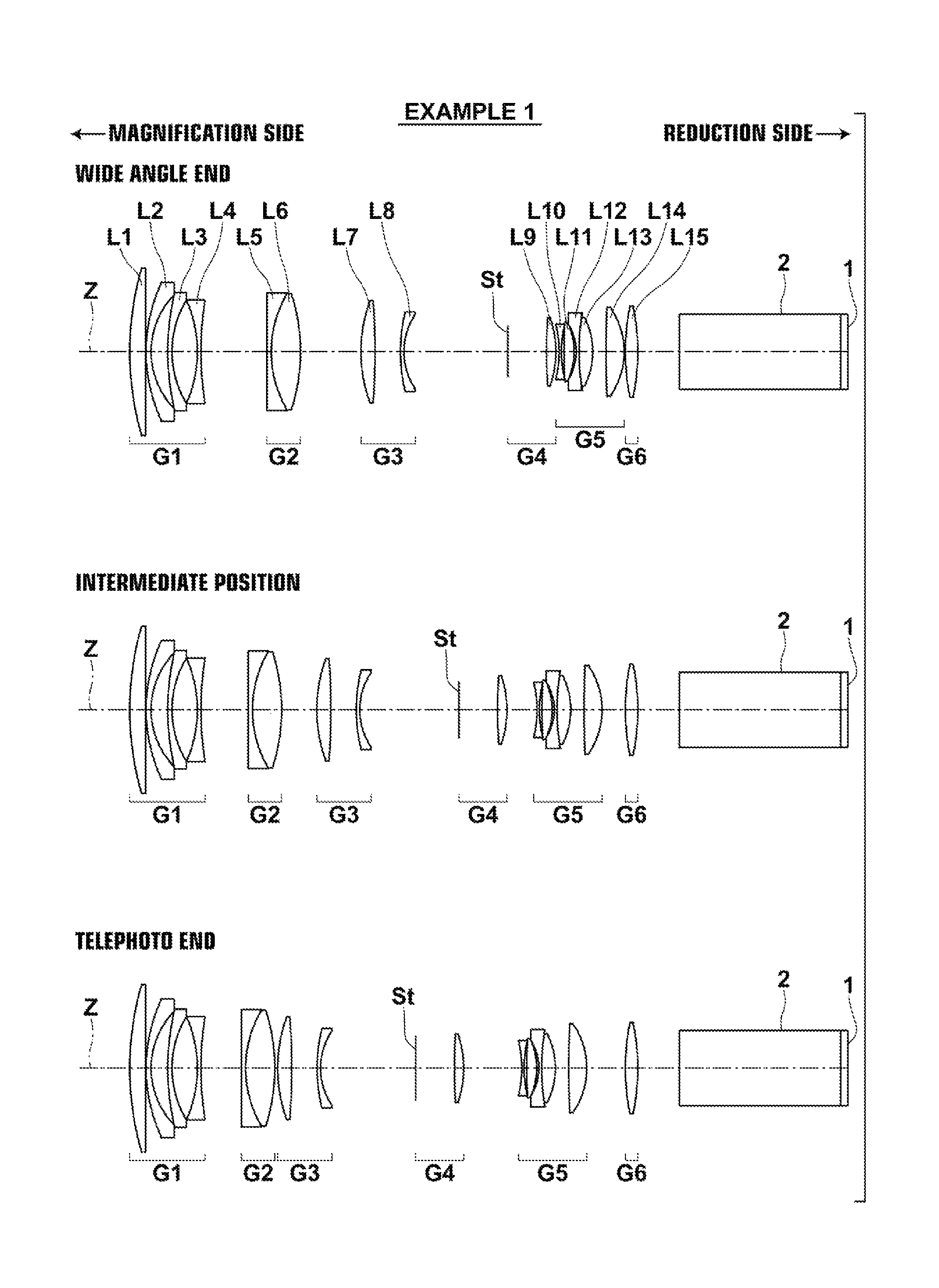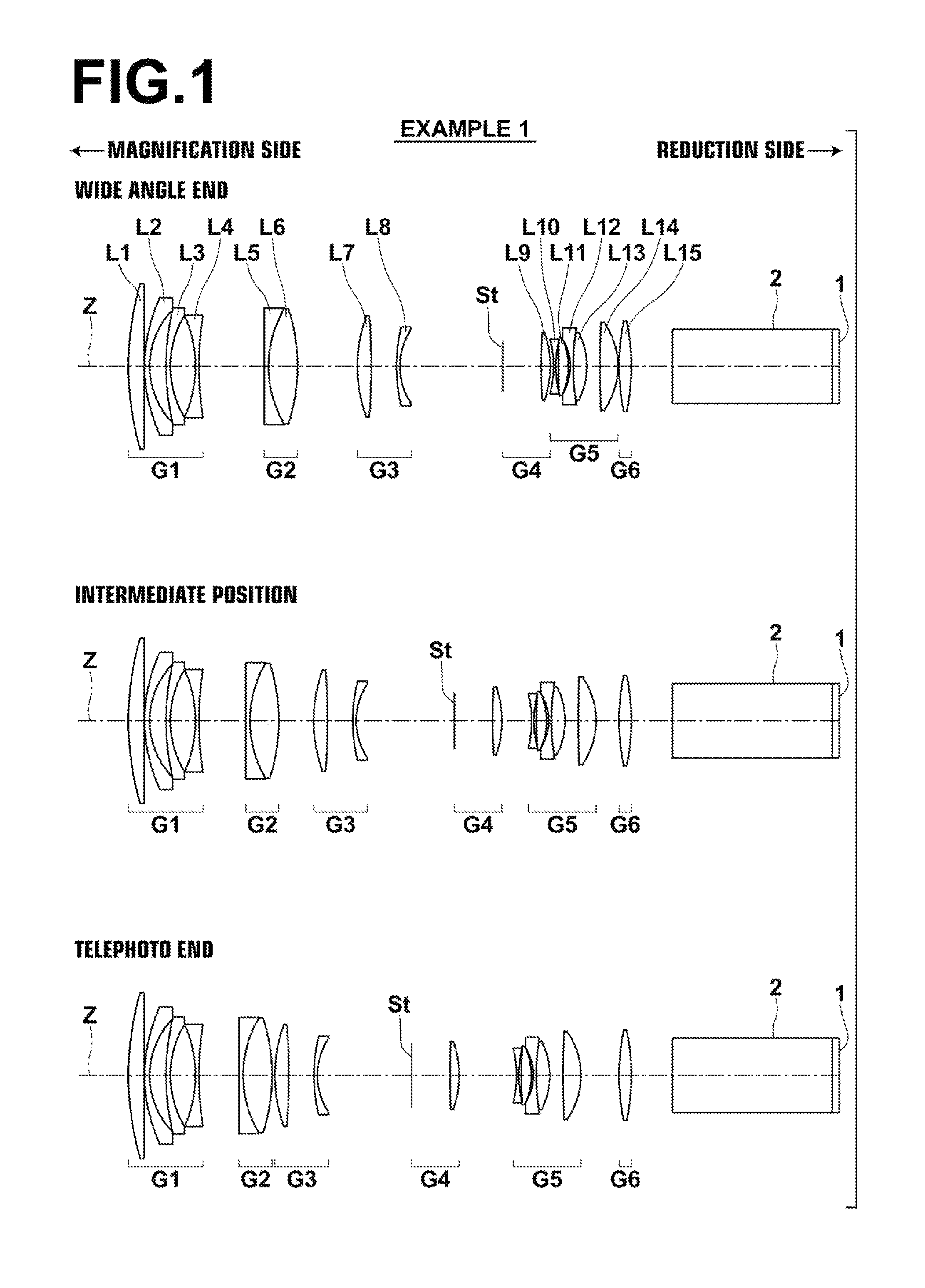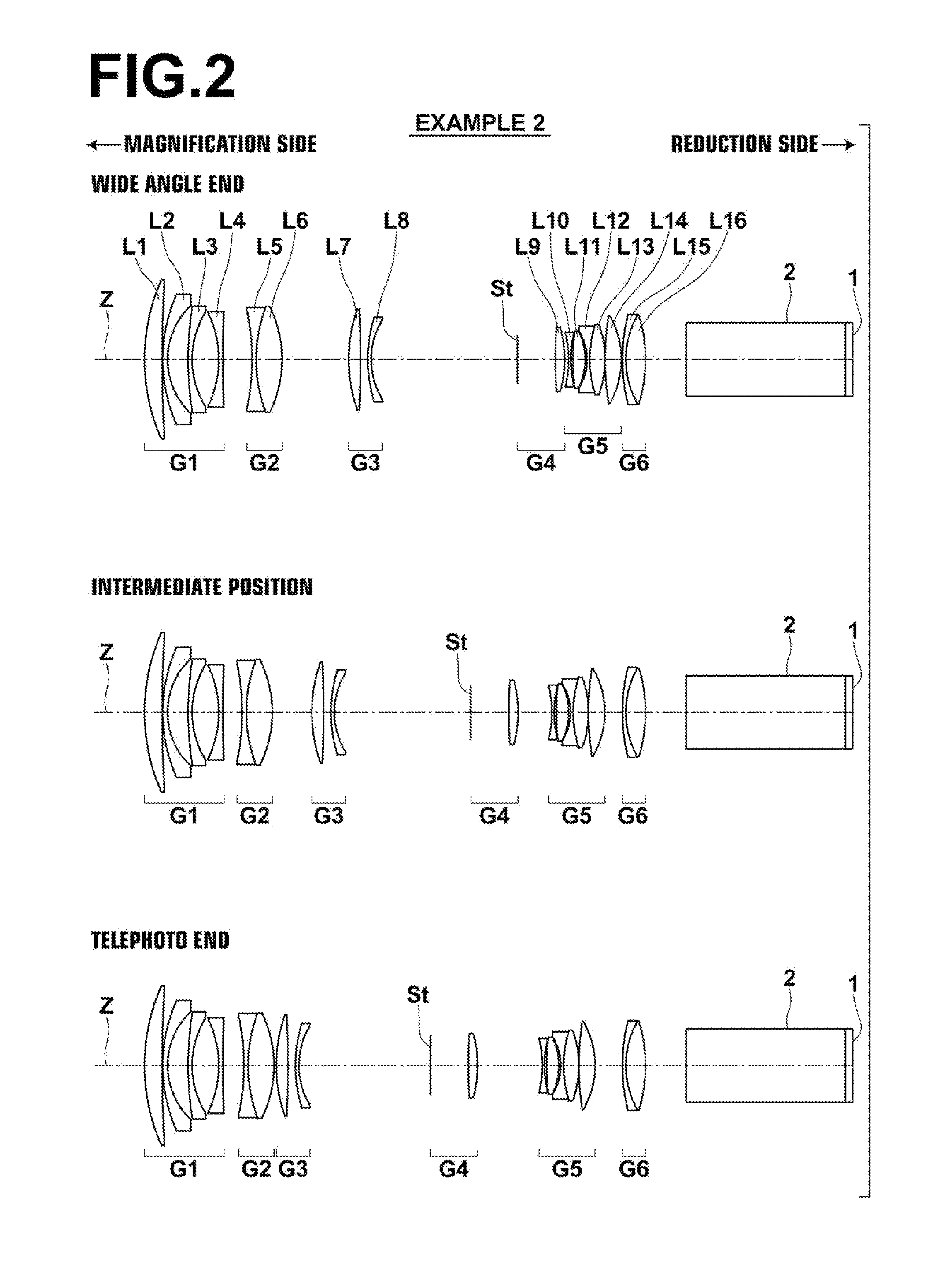Projection zoom lens and projection type display device
a projection zoom and display device technology, applied in the field of projection zoom lenses, can solve the problems of likely fluctuation of field curvature caused by magnification change, and achieve the effect of wide utilizable range, high zoom ratio, and favorable correction of field curvature fluctuations
- Summary
- Abstract
- Description
- Claims
- Application Information
AI Technical Summary
Benefits of technology
Problems solved by technology
Method used
Image
Examples
example 1
[0145]FIG. 1 illustrates the positions of lens groups of a projection zoom lens according to Example 1 of the present invention at a wide angle end, a telephoto end, and an intermediate position between the two. Because a description has already been given regarding FIG. 1, redundant descriptions will be omitted here.
[0146]In the projection zoom lens of Example 1, the first lens group G1 is constituted by four lenses, which are a first lens L1 having a positive refractive power (hereinafter, lenses will simply be referred to as “positive” or “negative”), a negative second lens L2, a negative third lens L3, and a negative fourth lens L4, provided in this order from the magnification side. The second lens group G2 is constituted by two lenses, which are a negative fifth lens L5 and a positive sixth lens L6, provided in this order from the magnification side.
[0147]The third lens group G3 is constituted by two lenses, which are a positive seventh lens L7 and a negative eighth lens L8, p...
example 2
[0160]FIG. 2 illustrates the arrangements of lens groups of the projection zoom lens of Example 2 at the wide angle end, the telephoto end, and an intermediate position between the wide angle end and the telephoto end. In Example 2, a first lens group G1 is constituted by four lenses, which are a positive first lens L1, a negative second lens L2, a negative third lens L3, and a negative fourth lens L4, provided in this order from the magnification side. A second lens group G2 is constituted by a negative fifth lens L5 and a positive sixth lens L6, provided in this order from the magnification side.
[0161]A third lens group G3 is constituted by two lenses, which are a positive seventh lens L7 and a negative eighth lens L8, provided in this order from the magnification side. A fourth lens group G4 is constituted by and an aperture stop St, which is a variable stop, and a positive ninth lens L9 provided in this order from the magnification side.
[0162]A fifth lens group G5 is constituted...
example 3
[0168]FIG. 3 illustrates the arrangements of lens groups of the projection zoom lens of Example 3 at the wide angle end, the telephoto end, and an intermediate position between the wide angle end and the telephoto end. In Example 3, a first lens group G1 is constituted by four lenses, which are a positive first lens L1, a negative second lens L2, a negative third lens L3, and a negative fourth lens L4, provided in this order from the magnification side. A second lens group G2 is constituted by a negative fifth lens L5 and a positive sixth lens, provided in this order from the magnification side.
[0169]A third lens group G3 is constituted by two lenses, which are a positive seventh lens L7 and a negative eighth lens L8, provided in this order from the magnification side. A fourth lens group G4 is constituted by an aperture stop St, which is a variable stop, and a positive ninth lens L9, provided in this order from the magnification side.
[0170]A fifth lens group G5 is constituted by fi...
PUM
 Login to View More
Login to View More Abstract
Description
Claims
Application Information
 Login to View More
Login to View More - R&D
- Intellectual Property
- Life Sciences
- Materials
- Tech Scout
- Unparalleled Data Quality
- Higher Quality Content
- 60% Fewer Hallucinations
Browse by: Latest US Patents, China's latest patents, Technical Efficacy Thesaurus, Application Domain, Technology Topic, Popular Technical Reports.
© 2025 PatSnap. All rights reserved.Legal|Privacy policy|Modern Slavery Act Transparency Statement|Sitemap|About US| Contact US: help@patsnap.com



